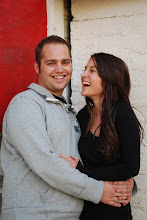Not only can I have my students use it, but I can use digital storytelling in my lessons as well. If I am going to introduce a new topic I can show pictures with music and narration that can really interest the students. I can use this when teaching about the First Thanksgiving or Mountain Men. I could also use this to teach children about the harmful effects of smoking or doing drugs. It can be a very powerful way to portray a message.
On the right you'll find a few websites that I think would be helpful for my students to learn more about digital storytelling.
My lesson plan:
Hello class! Well this week we are going to get started on Digital Storytelling. In class we have been reading several stories (Little Red Riding Hood, The Three Little Pigs, Cinderella, Snow White, The Ginger Bread Man, and Beauty and the Beast). The last book we read was the Stinky Cheese Man. That book took several different stories and changed them up. We also read the Wolf's version of the Three Little Pigs.
Now, what I want you to do is get with a partner and as a partnership you will create a story like the last two we read. I want you to take a familiar fairytale or story and write it from a different perspective. You can tell the other side of the story. Or you can put characters from different stories together in a new one. You get to change it up however you like, and make a movie out of it.
First you need write a script and make a storyboard. I will give you copies of this in class, but it looks like this.

This is where you will draw a sketch of what picture you will put for each frame. Then you will write down the words you will be narrating for each frame from your script. You can also add the name of the music you will use for each picture.
This storyboard will help you while you are putting together your video on the computer. This will be your outline. You can always change it when you are working on the video. This is normal. You may want to change some pictures or words to make it fit better. That is perfectly normal.
The pictures that you choose, must go along with your script. You can take pictures with your camera, draw pictures and scan them onto the computer, you can find pictures online, and you can scan pictures from books. However, you must remember to reference where you get your pictures from during the credits part at the end of your movie.
Now, when creating a movie there are a few elements that you need to make sure your movie includes. I will be grading you on these so make sure include each element (I will also be giving you a copy of this in a hand out).
Components of Digital Storytelling
Point of View:
- · Who is telling the story?
- · What is their side?
- · Why are you telling this story?
- · Does it fit the audience?
- · Have you found your own connection to the story?
Make sure you have a key question that keeps the viewer’s attention and is answered at the end. This sets up tension and hooks the audience till the end.
Emotional Content:
- · Engage emotions.
- · Make it a tearful or a joyous ride.
- · Create a video that people can connect with.
Voice:
- · Personalize the story.
- · Make sure you have the script mostly memorized so it sounds more like reciting rather than reading.
- · Pick a good recording voice that fits the topic of your video.
Economy:
- · How many pictures do I really need?
- · How is the speed?
- · How is the timing?
- · Is it visually entertaining?
- · Your video should be about 2 to 3 minutes long.
Images:
- · Choose your images wisely.
- · Use only the pictures that add more to the video in quality, emotion, and getting your point across.
- · Do they make an impact on the viewer?
- · Viewers process images 60,000 times faster than narrative information.
- · They can vary in duration (3-5 seconds).
Music:
- · This should be the last thing that you grab.
- · Make sure it’s instrumentally, or has no words.
- · Make sure it is appropriate for the topic of your video
Sound:
- · Narration
- · Ambient sounds (gunshots, clock ticking, door slamming).
Pacing:
- · Rhythm of your story.
- · How fast or slow you go.
- · This makes the video run smoothly.
Don't worry about understanding everything right now. We are going to work on this together, and do a little each day. I am so excited for this project! We are going to have so much fun! At the end of this unit we will have a party. You can bring blankets, a pillow, and some treats to share with the whole class. We will then watch everyone's videos!! So start thinking of ideas of what you want your story to be about!!
P.S. To help you guys out I've posted some links to great sites, as well as a video that will help you in your process of digital storytelling.

No comments:
Post a Comment